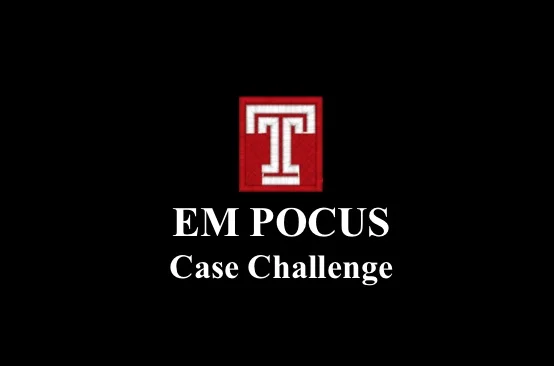Case:
30-year-old pregnant female presented for a sore throat. She had been seen 3 days prior and diagnosed with a left sided peritonsillar abscess (PTA). Landmark-guided needle aspiration was performed at that time and extracted blood with a small amount of pus and she was discharged with strict return precautions. At the time of her return visit, she reported worsening pain and swelling with inability to tolerate PO, including difficulty with secretions. On exam, she had a left sided PTA with marked uvula deviation.
Bedside ultrasound was performed and showed the following
Case Conclusion:
The location of the abscess was identified on POCUS and the patient underwent successful needle aspiration of 9 cc of purulence. She experienced immediate symptomatic relief and was able to be discharged home.
How to perform US for PTA:
Provide pain control with NSAIDs (if no contraindications exist) and possibly narcotic medications. Use topical anesthetics to help facilitate successful ultrasound and drainage. Consider nebulized lidocaine with atomized lidocaine or benzocaine directly onto the posterior pharynx.
Ask the patient to hold a laryngoscope blade to depress the tongue. This will not only help keep the tongue out of the way for the ultrasound and drainage, but also provide a light source during drainage.
Insert a 8-5 MHz intracavitary probe with a fresh probe cover into the mouth, noting the angle at which you are approaching the tonsillar tissue. Look for heterogeneous, hypoechoic material within the tonsillar area. Applying gentile pressure with the probe may show swirling of the pus within the abscess, as seen in the video clips.
After identification of the abscess pocket, locate the carotid artery. Color flow can be helpful for this. Use the measure function to determine the depth of the abscess cavity and the distance from the mucosal surface to the carotid artery to help ensure you don't pass the needle deep enough to enter the vasculature during drainage.
Remove the ultrasound probe, again taking note of the angle at which you were approaching the tonsil when the deepest pocket of the abscess was seen.
Trim the needle guard of an 18-G needle attached to a 10cc syringe to a depth of the abscess cavity.
Using the same approach angle as used to ultrasound the tonsil, insert the needle into the cavity and withdraw to evacuate the abscess.
An article in the June 2012 issue of Academic Emergency Medicine by Costantino, Satz, Dehnkamp, and Goett, “Randomized Trial Comparing Intraoral Ultrasound to Landmark-based Needle Aspiration in Patients with Suspected Peritonsillar Abscess” shows that POCUS is able to accurately distinguish between PTA and peritonsillar cellulitis, leads to a higher rate of successful drainage by the emergency physician, and reduces the need for ENT consultation and CT imaging. Consider using the simple modality to expedite appropriate management of patients with suspected PTA.
-Allison Zanaboni, MD, Emergency Medicine Ultrasound Fellow




